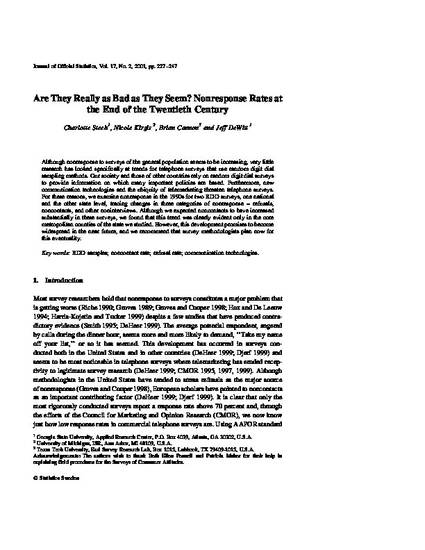
Article
Are They Really as Bad as They Seem? Nonresponse Rates at the End of the Twentieth Century
Journal of Official Statistic
(2002)
Abstract
Although nonresponse to surveys of the general population seems to be increasing, very little research has looked specifically at trends for telephone surveys that use random digit dial sampling methods. Our society and those of other countries rely on random digit dial surveys to provide information on which many important policies are based. Furthermore, new communication technologies and the ubiquity of telemarketing threaten telephone surveys. For these reasons, we examine nonresponse in the 1990s for two RDD surveys, one national and the other state level, tracing changes in three categories of nonresponse - refusals, noncontacts, and other noninterviews. Although we expected noncontacts to have increased substantially in these surveys, we found that this trend was clearly evident only in the core metropolitan counties of the state we studied. However, this development promises to become widespread in the near future, and we recommend that survey methodologists plan now for this eventuality.
Keywords
- rdd samples,
- noncontact rate,
- refusal rate,
- communication technologies
Disciplines
Publication Date
2002
Citation Information
Charlotte Steeh, Nicole Kirgis, Brian Cannon and Jeff R DeWitt. "Are They Really as Bad as They Seem? Nonresponse Rates at the End of the Twentieth Century" Journal of Official Statistic Vol. 17 (2002) p. 227 - 247 ISSN: 0282-423X Available at: http://works.bepress.com/jeff-dewitt/13/
